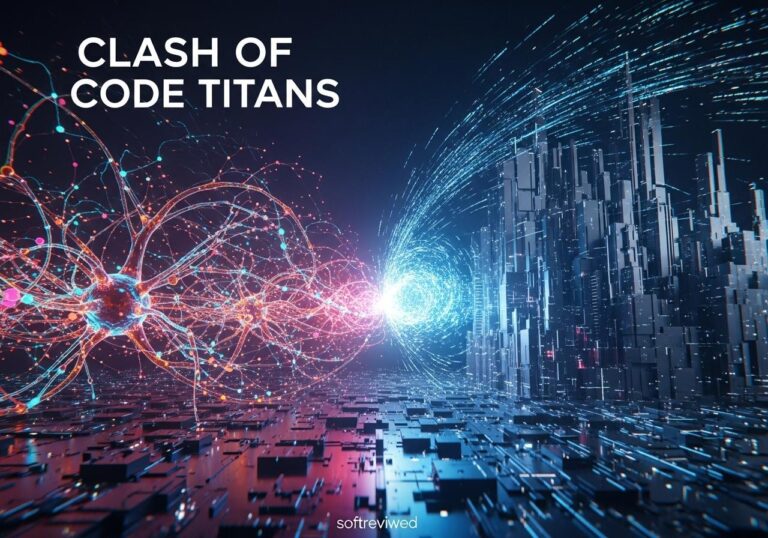Google Gemini Pro Vision: Key Features
Discover how Google’s multimodal AI is transforming visual content creation and development workflows
🎨 Conversational Image Editing
Refine visuals through natural dialogue interactions, allowing for precise adjustments and iterative improvements to achieve exactly what you envision. [3][4]
📚 Multimodal Storytelling
Generate cohesive visual narratives that maintain consistency across different contexts and scenarios, perfect for content creation and marketing materials. [4]
🌍 Realistic Outputs via World Knowledge
Create context-aware imagery that leverages comprehensive global data for accurate, realistic visual representations that make sense in their intended environment. [4][5]
⚡ Higher API Rate Limits
Build scalable applications with increased throughput via Google AI Studio or Vertex AI integration, supporting enterprise-level implementation needs. [3]
🛠️ Developer-Friendly Tools
Accelerate development with prebuilt applications like the Co-Drawing Sample, enabling rapid experimentation and implementation of visual AI capabilities. [3][5]
🌐 Global Developer Access
Benefit from expanded availability beyond trusted testers, with broader access to developers worldwide looking to integrate advanced visual AI capabilities. [4][5]
Gemini 2.0 Image API: A Game-Changer for AI Visuals in Development 🤖
For developers looking to integrate cutting-edge AI image generation into their applications, the release of the Gemini 2.0 Image API is a significant event. This update brings enhanced capabilities, improved performance, and new tools for creating stunning visuals. This article will provide a developer-focused overview of the Gemini 2.0 Image API, covering key features, integration strategies, and best practices for leveraging its power. Expect discussion of API endpoints, image quality, and development workflows.
Enhanced Image Generation Capabilities: What's New in the Gemini 2.0 API? ✨
Gemini 2.0 introduces several key improvements for developers working with AI image generation. These enhancements aim to provide greater control, higher quality output, and more efficient workflows.
Improved Image Quality and Realism: Raising the Bar for AI-Generated Visuals 📈
One of the most notable improvements is the enhanced image quality and realism. Gemini 2.0 leverages updated models and training data to generate images with greater detail, sharper textures, and more accurate representations of real-world objects and scenes.
New API Endpoints and Parameters: Fine-Grained Control Over Image Creation ⚙️
Gemini 2.0 offers new API endpoints and parameters that provide developers with more granular control over the image generation process. This includes options for specifying image styles, adjusting artistic parameters, and influencing the overall aesthetic of the generated visuals.
Integrating Gemini 2.0 Image API into Your Projects: A Developer's Guide 👨💻
Integrating the Gemini 2.0 Image API into your projects involves a few key steps. This section provides a developer-focused guide to help you get started.
Authentication and API Key Management: Securely Accessing the Gemini 2.0 API 🔒
Accessing the Gemini 2.0 Image API requires authentication using an API key. You can obtain an API key through the Google AI Studio or a similar developer platform. It's crucial to protect your API key and follow best practices for secure API key management.
Code Examples and Sample Projects: Jumpstart Your Image Generation Development 🏃
To help developers get up and running quickly, Google provides code examples and sample projects that demonstrate how to use the Gemini 2.0 Image API. These resources can serve as a starting point for your own image generation applications.
Optimizing Performance and Cost: Best Practices for Using the Gemini 2.0 API 💡

To ensure optimal performance and cost-effectiveness, it's important to follow best practices when using the Gemini 2.0 Image API.
Managing API Usage and Rate Limits: Ensuring Smooth and Reliable Image Generation 🚦
The Gemini 2.0 Image API has rate limits to prevent abuse and ensure fair usage. Developers should carefully manage their API usage and implement strategies to handle rate limits gracefully.
Choosing the Right Model for Your Needs: Balancing Quality, Speed, and Cost 🤔
Gemini 2.0 offers different models with varying capabilities and pricing. Developers should carefully choose the model that best suits their needs, balancing image quality, generation speed, and cost.
Real-World Applications: How Developers are Using the Gemini 2.0 Image API 🌍
The Gemini 2.0 Image API is being used by developers across a wide range of applications.
Creating Dynamic Content for Web and Mobile Apps: Enhancing User Engagement with AI Visuals 📱
Developers are using the API to generate dynamic content for web and mobile apps, creating personalized experiences and enhancing user engagement.
Building AI-Powered Art and Design Tools: Empowering Creativity with the Gemini 2.0 API 🎨
The Gemini 2.0 Image API is empowering developers to build AI-powered art and design tools that enable users to create stunning visuals with ease.
Automating Image Generation Workflows: Streamlining Visual Content Creation Processes ⚙️
Developers are using the API to automate image generation workflows, streamlining visual content creation processes and saving time and resources.
The Future of AI Image Generation: What's Next for the Gemini API? 🔮
The field of AI image generation is rapidly evolving, and Google is committed to continuously improving the Gemini API.
Exploring Advanced Features and Customization Options: Style Transfer, Image Editing, and More! 🤯
Future versions of the Gemini API may offer advanced features such as style transfer, image editing, and the ability to generate images from multiple prompts.
Ethical Considerations: Responsible Development and Deployment of AI Image Generation Systems ✅
As AI image generation becomes more powerful, it's important to consider the ethical implications. Developers should prioritize responsible development and deployment of AI image generation systems.







